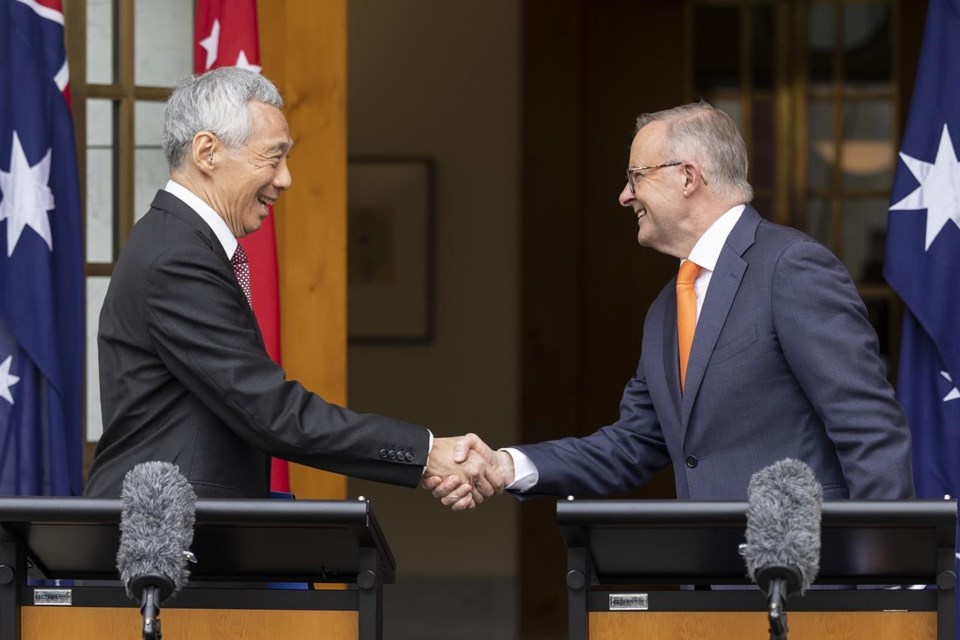CANBERRA, Australia (AP) — Australian and Singaporean leaders announced Tuesday what they described as a world-first agreement to cooperate in transitioning their economies to net-zero greenhouse gas emissions.
Singapore’s Prime Minister Lee Hsien Loong and Australia’s Prime Minister Anthony Albanese outlined their so-called Green Economy Agreement between the two countries after an annual meeting in the Australian Parliament House.
The agreement has 17 components that cover facilitating trade and investment in green services, harmonizing standards and building green growth sectors through collaboration between business.
Australia has committed to reducing its emissions to and Singapore is considering adopting the same target.
Albanese described Singapore as “one of the most innovative economies in the world,” while Australia had the potential to become a “renewable energy superpower” due to its vast open spaces and relatively small population.
The agreement “will support clean energy innovation, unlock business opportunities and create jobs, and help deliver our mission’s targets while positioning Australia as a renewable energy superpower,” Albanese said.
Lee foreshadowed further cooperation in cross-border electricity trade and “sustainable aviation” through what he described as the “world’s first such agreement.”
”These are all areas which are of interest to Singapore and to Singapore businesses and we hope with a Singapore-Australia GEA they’ll be able to move forward,” Lee said.
“But we also hope with this GEA will encourage other countries to look at what we have been able to do and to ask whether some of this may not make sense to them to do with Singapore or to do with each other,” Lee added.
Singapore is already planning to use solar power from northern Australia transmitted by a 4,200-kilometer (2,600-mile) submarine cable.
Singaporean company Sun Cable plans to start construction in 2024 of the 30 billion Australian dollar ($19 billion) Australia-Asia PowerLink project that will include 12,000 hectares (30,000 acres) of solar panels near the northern Australian city of Darwin.
Albanese described the export of Australian solar power to Singapore as an “ultimate win-win.”
“If this project can be made to work — and I believe it can be — you will see the world’s largest solar farm, you will see the export of energy across distances … (and) the production of many jobs here in Australia, including manufacturing jobs,” Albanese said.
Rod Mcguirk, The Associated Press




